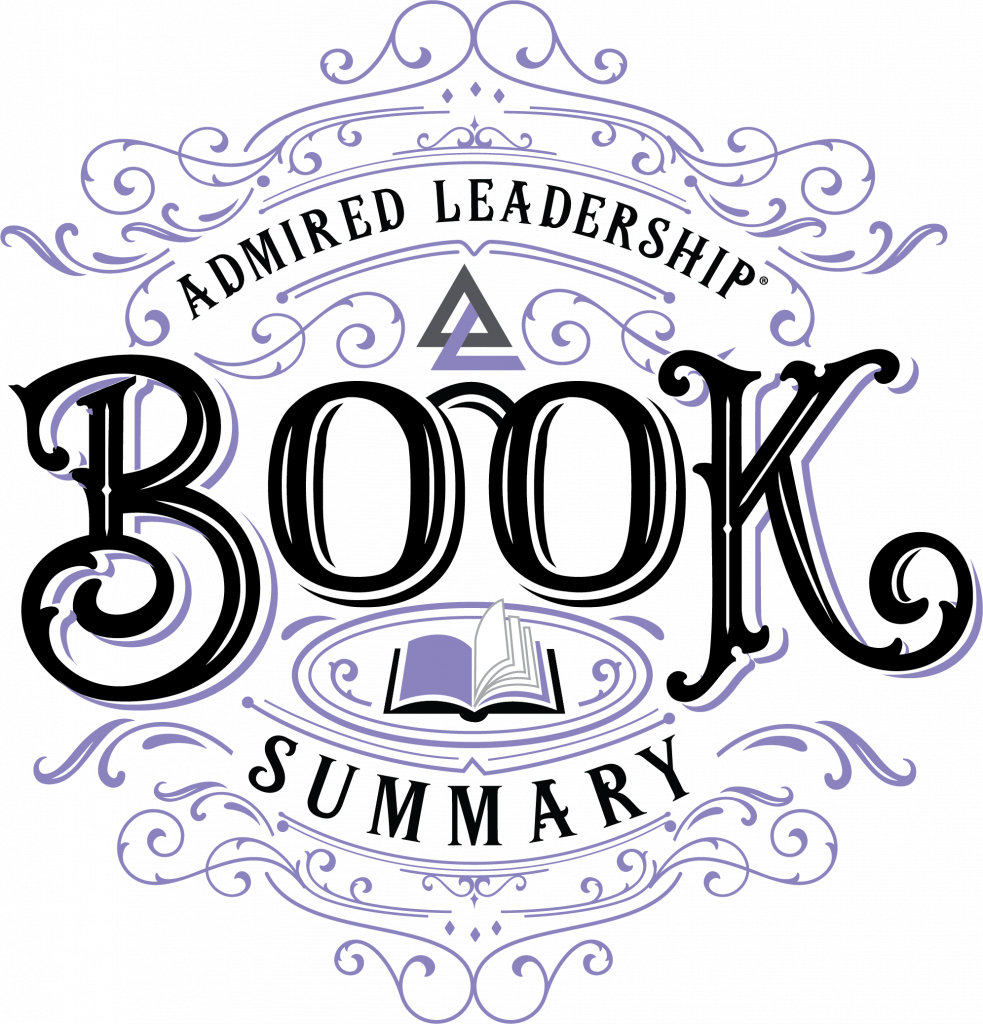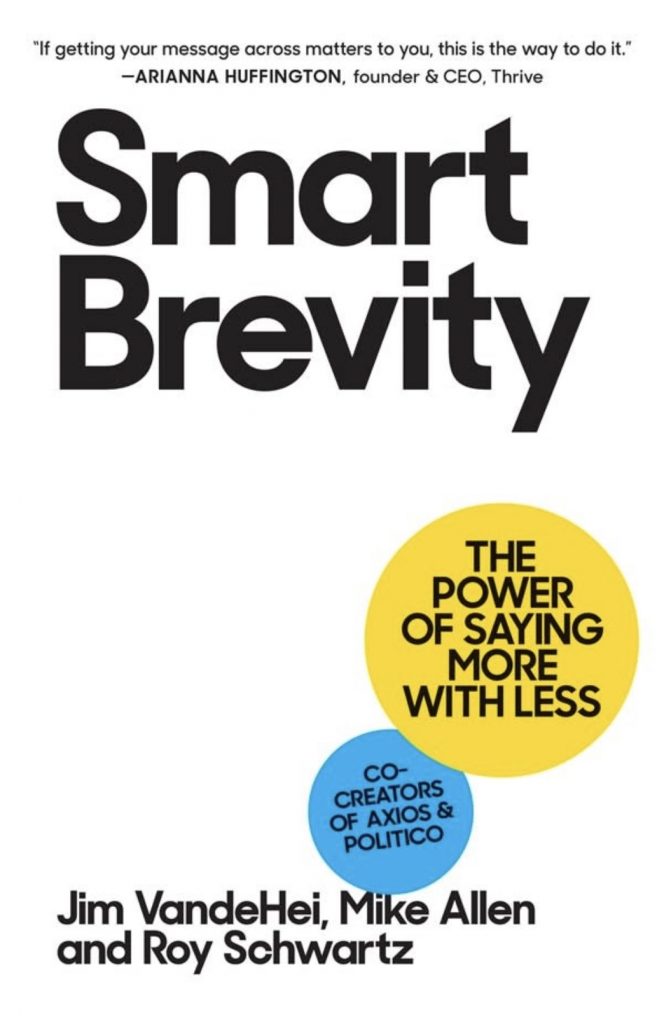Key Quote:
“Short, not shallow” (p. 11). — Jim VandeHei, Mike Allen, & Roy Schwartz
Key Concepts
What Is Smart Brevity? The human mind can only process a certain amount of information well. As the barrage or “fog” of words increases in our culture, smart brevity is a method for making communication both more efficient and more effective. The overall concept is “short, not shallow” – choosing the right concepts to communicate, the right words to do it with, and the right style to help the reader mentally jump in, understand the idea, and remember what is said.
How to Do It. Say only what needs to be said – no more – to the people who need to hear it – no one else. Understand the importance of a subject line that grabs the reader. Make sure you understand and communicate that one message you wish for people to know. Choose your language carefully, leaning towards clear, short, action-oriented words.
Playbook. This section of the book includes a host of tips and tricks to further the goal of keeping your newsletters, e-mails and reports, meetings, speeches, presentations, and visuals smart and brief. They should be concise, interesting, meaningful, memorable, and respectful of your audience and their time.
Key Concepts:
Foundations of Smart Brevity
The foundation of smart brevity is what authors call the “Core 4.”
1. “A muscular tease” – “six or fewer strong words” as a subject line
2. “One strong first sentence or ‘lede’” – a “direct,” “short,” and memorable sentence
3. “Context or ‘why it matters’” – a concise explanation with only enough background for the receiver to be able to understand the communication
4. “The choice to learn more or ‘go deeper’” – an opportunity for your receiver to ask questions or access a source that leads them to more information and provides them with the choice to uncover more or not (pp. 24-25).
“You bring more soul and salience to your writing by being direct, helpful and time-saving. Don’t omit important facts or nuance, oversimplify or dumb down” (p. 15).
Outline your communication with smart brevity and use these guiding questions:
1. “Who is the smart reader” of this communication?
2. “What is an update or other topic you’re familiar with and that they need to know about?”
3. “Why is it significant?” (p. 208).
The Lede
Eye-tracking studies conducted by Robert Yaros of the University of Maryland show that we spend 26 seconds, on average, reading a piece of content. This makes it even more important for a message to begin with an appropriate lede (p. 58).
“The most important words you type are subject lines, headlines, and the first line of tweets, notes or papers” (p. 66).
The best subject lines consist of “short, direct, urgent” messages (p. 140).
When writing, think about your audience and what they want and need first. When you communicate with the broadest possible audience, similar to many TV networks, you include too much context, and your message is unfocused (pp. 44-46).
Start a communication by simply writing the one big idea you need your audience to remember. Communicate that message sincerely and briefly (pp. 46-50).
Organize Your Communication
Use bullets to organize and “isolate facts or ideas.” Bullets draw a reader’s attention in longer messages (p. 92).
“Bullets make it easy for skimmers and close readers to catch the most important data points or supporting ideas” (p. 140).
“Bold any words or figures or names you want to stand out – here again, it’s the perfect eye trap for those skimmers” (p. 141).
Choose strong, one-syllable words. Use strong words to tell the story. Do not write messages that tell readers about a story (pp. 100-103).
Smart Brevity in Meetings
According to a study from HBR Design Thinking, 90 percent of people admit to daydreaming while in a meeting and 70 percent admit to doing other work. Make your meetings more effective by eliminating who does not need to be there and streamlining content to receivers who do need to be there (p. 148).
Always lead a meeting with an agenda. Open with your headline – what needs to be resolved or debated (p. 150).
“When 2 minutes are left, bring the discussion to an end. Summarize the takeaways and be specific about next steps.” Before the close of business, send out a follow-up email listing next steps (p. 151).
“Write down the precise outcome you want and three to five points you MUST make to support it.” These are your supporting points, and, in conjunction with your headline, they are your outline (p. 167).
Smart Brevity in Presentations and Visuals
Limit your deck to include one message per slide and one font or “visual style” throughout (p. 168).
“Molecular biologist John Medina found that images = lasting recall. He discovered that adding an arresting image can increase recall to 65 percent, compared to 10 percent if a person simply hears it” (p. 168).
To achieve smart brevity in visuals: 1. “Start with a strong concept.” 2. “Edit out superfluous elements.” 3. “Always judge the work from the perspective of the viewer” (p. 183).
“Be respectful of your audience – abstraction, clutter, confusion are the enemy” (p. 185).
VandeHei, J., Allen, M., & Schwartz, R. (2022). Smart Brevity: The Power of Saying More With Less. New York: Workman Publishing.

“Molecular biologist John Medina found that images = lasting recall. He discovered that adding an arresting image can increase recall to 65 percent, compared to 10 percent if a person simply hears it.”
“Be respectful of your audience – abstraction, clutter, confusion are the enemy.”
